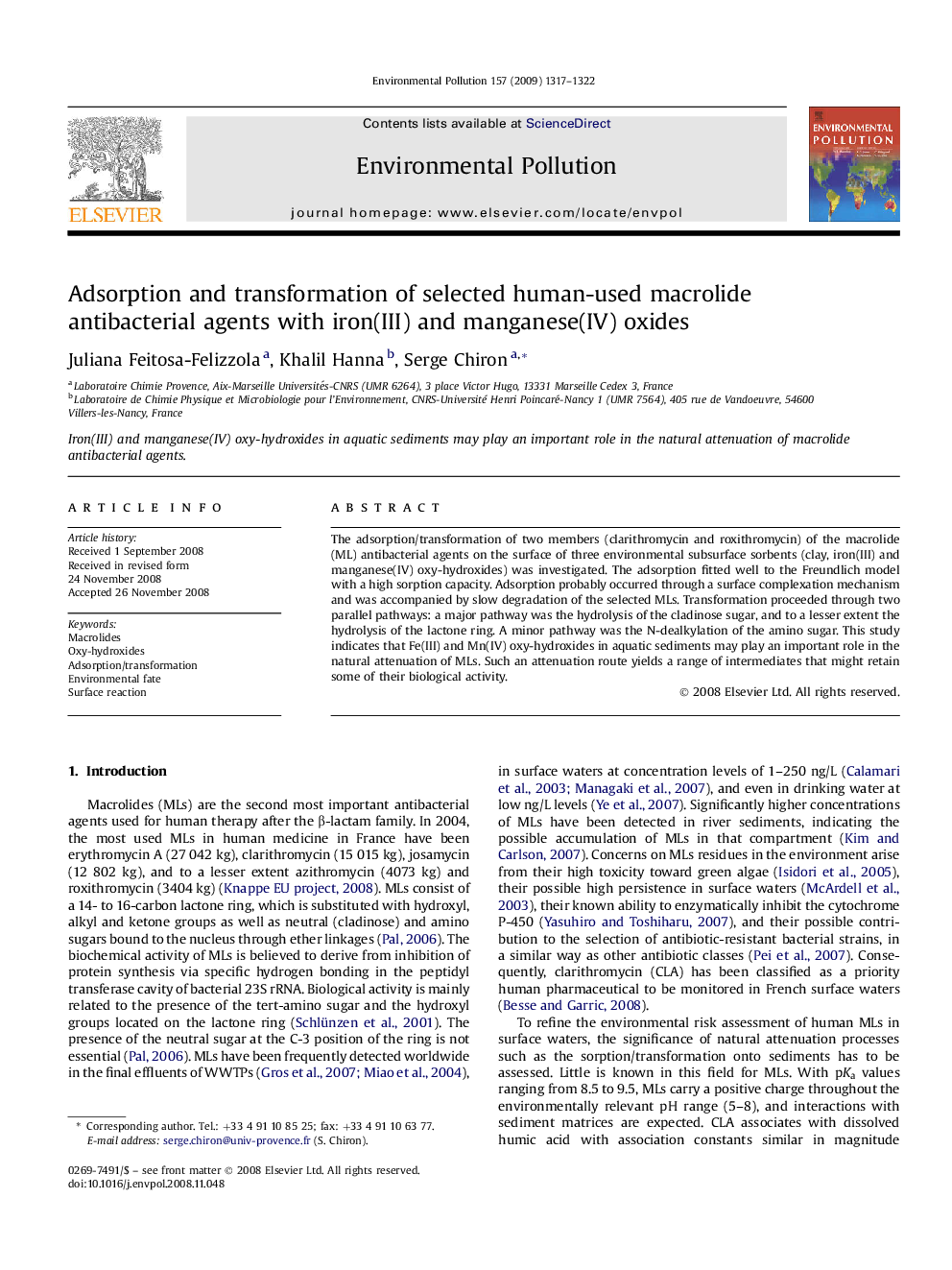| Article ID | Journal | Published Year | Pages | File Type |
|---|---|---|---|---|
| 4426540 | Environmental Pollution | 2009 | 6 Pages |
The adsorption/transformation of two members (clarithromycin and roxithromycin) of the macrolide (ML) antibacterial agents on the surface of three environmental subsurface sorbents (clay, iron(III) and manganese(IV) oxy-hydroxides) was investigated. The adsorption fitted well to the Freundlich model with a high sorption capacity. Adsorption probably occurred through a surface complexation mechanism and was accompanied by slow degradation of the selected MLs. Transformation proceeded through two parallel pathways: a major pathway was the hydrolysis of the cladinose sugar, and to a lesser extent the hydrolysis of the lactone ring. A minor pathway was the N-dealkylation of the amino sugar. This study indicates that Fe(III) and Mn(IV) oxy-hydroxides in aquatic sediments may play an important role in the natural attenuation of MLs. Such an attenuation route yields a range of intermediates that might retain some of their biological activity.
